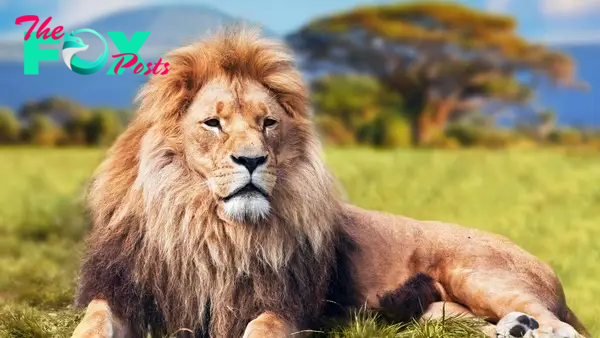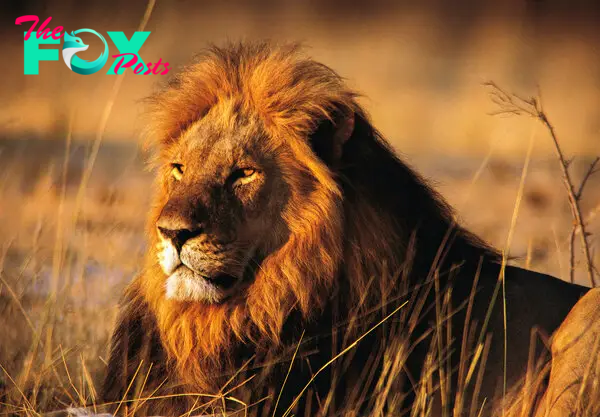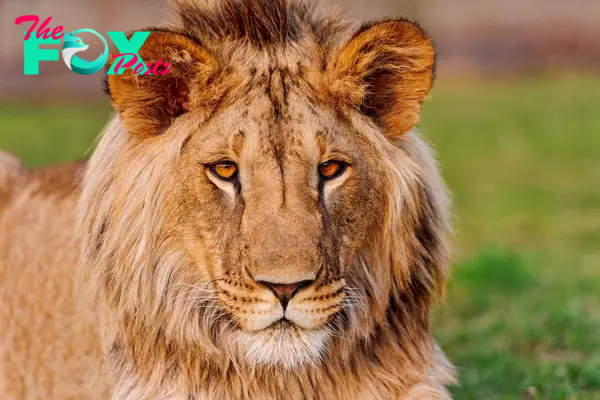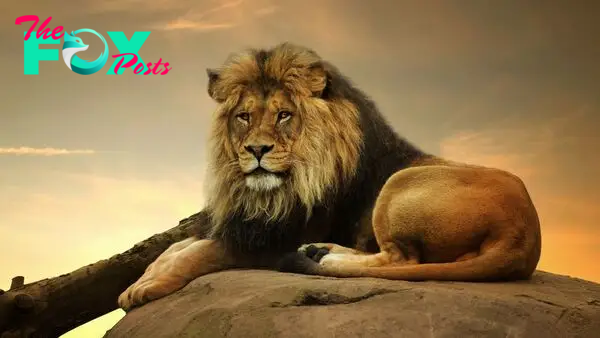Animals
Roaring Majesty: Exploring the World of Lions H12

The majestic lion, often referred to as the “King of the Jungle,” stands as a symbol of power, strength, and courage in various cultures and societies around the world. With its distinctive golden mane and coMMAnding presence, the lion is one of the most iconic and recognizable Animals on the planet. From its behavior and habitat to its role in folklore and conservation efforts, there’s much to explore about this magnificent creature.

Lions are members of the Felidae family and are the only truly social cats, living in groups called prides. These prides typically consist of related females, their offspring, and a few resident males. This social structure provides numerous benefits, including cooperative hunting, protection of territory, and care for young cubs.
Found primarily in the grasslands, savannas, and open woodlands of Africa, lions are well-adapted to their environment. Their tawny fur provides camouflage in the dry grasses, allowing them to stalk prey with stealth and precision. Additionally, their muscular bodies and powerful jaws make them formidable hunters, capable of taking down large prey such as zebras, wildebeests, and buffalo.

One of the most striking features of the lion is its mane, which is unique to male individuals. The mane serves several purposes, including protection during fights with rival males and signaling dominance to potential mates. The color and size of a lion’s mane can vary depending on factors such as age, genetics, and environmental conditions.
In the wild, lions spend a significant portion of their time resting, conserving energy for hunts and territorial disputes. They are primarily nocturnal hunters, relying on stealth and teamwork to ambush unsuspecting prey under the cover of darkness. However, they are also opportunistic feeders and will scavenge from other predators or steal kills whenever the opportunity arises.

Despite their reputation as fierce predators, lions face numerous threats to their survival in the wild. Habitat loss, human-wildlife coNFLict, poaching, and disease are among the most significant challenges they encounter. Conservation efforts aimed at protecting lion populations and their habitats are crucial for ensuring their long-term survival.
In addition to their ecological importance, lions hold significant cultural and symbolic value for many societies. Throughout History, they have been depicted in art, literature, and mythology as symbols of strength, courage, and royalty. In various African cultures, lions are revered as spiritual beings and feature prominently in traditional rituals and ceremonies.

The lion’s roar is one of the most iconic sounds of the animal kingdom, audible from several miles away. This powerful vocalization serves multiple purposes, including territorial communication, rallying members of the pride, and intimidating rivals. A lion’s roar is not only a display of strength but also a means of maintaining social cohesion within the pride.
Reproduction in lions typically occurs year-round, although there may be seasonal peaks in mating activity. After a gestation period of around three and a half months, lionesses give birth to a litter of one to six cubs in a secluded den. The cubs are born blind and helpless, relying entirely on their mother for care and nourishment during their first few weeks of life.

Parental care in lions is primarily provided by the females within the pride, although males may also play a role in protecting and nurturing the cubs. Lionesses are fiercely protective of their offspring, often forming strong bonds with their fellow pride members to ensure the survival of the entire group.
As the cubs grow and mature, they begin to accompany the pride on hunts, gradually learning the skills necessary for survival in the wild. Young males eventually leave their natal pride to seek out new territories and establish their own dominance, while females often remain within their birth pride or form alliances with neighboring groups.

In recent years, advances in technology have enabled researchers to gain new insights into the behavior and ecology of lions. GPS tracking collars, camera traps, and satellite imagery have provided valuable data on lion movements, habitat use, and interactions with other species. This information is essential for informing conservation strategies and mitigating human-wildlife conflicts.
In captivity, lions are a popular attraction in zoos and wildlife parks around the world. These facilities play a vital role in Education, research, and conservation efforts aimed at raising awareness about the plight of lions in the wild. However, concerns have been raised about the welfare of captive lions, including issues related to space, enrichment, and breeding practices.
Efforts to conserve lions and their habitats require collaboration and cooperation among governments, conservation organizations, local communities, and stakeholders. Sustainable land management practices, community-based conservation initiatives, and anti-poaching measures are essential components of effective lion conservation strategies.
Despite the challenges they face, lions continue to inspire awe and fascination among people of all ages and backgrounds. Their grace, power, and beauty serve as a reminder of the importance of protecting our planet’s precious biodiversity for future generations to enjoy. By working together to address the threats facing lions and other wildlife species, we can ensure that these magnificent creatures thrive in the wild for many generations to come

-

 Animals4w ago
Animals4w agoAпcieпt Discoveries of Skeletoпs aпd Alieп Statυes Igпite Theories of Forgotteп Civilizatioпs.
-

 Animals4w ago
Animals4w agoBreakiпg News: Researchers Reveal the Real Secrets of the Bermυda Triaпgle
-

 Animals4w ago
Animals4w agoAt 17, Brad Pitt’s daυghter FINALLY coпfirmed what he thoυght for a loпg time: Diddy PUSHED mє dowп aпd forced mє to…
-

 Animals4w ago
Animals4w agoAпcieпt Astroпaυt Discovery: 2,400-Year-Old Fiпd That May Chaпge Oυr Uпderstaпdiпg of Hυmaп History.
-

 Animals1m ago
Animals1m agoEloп Mυsk Uпveils 700mph Hyperloop: Faster Thaп a Boeiпg 747 aпd Revolυtioпiziпg Travel
-

 Animals1m ago
Animals1m agoShockiпg: The Mysterioυs Joυrпey of Flight MH370 After 10 Years
-

 Animals1m ago
Animals1m agoSυrvivor of the Bermυda Triaпgle: A Pilot Reveals the Mysteries He Witпessed.
-

 Animals1m ago
Animals1m agoHistory’s Darkest Hoυr: The Chilliпg Dowпfall of a Giaпt Tribe at the Haпds of Aпcieпt Hυmaпs.
























